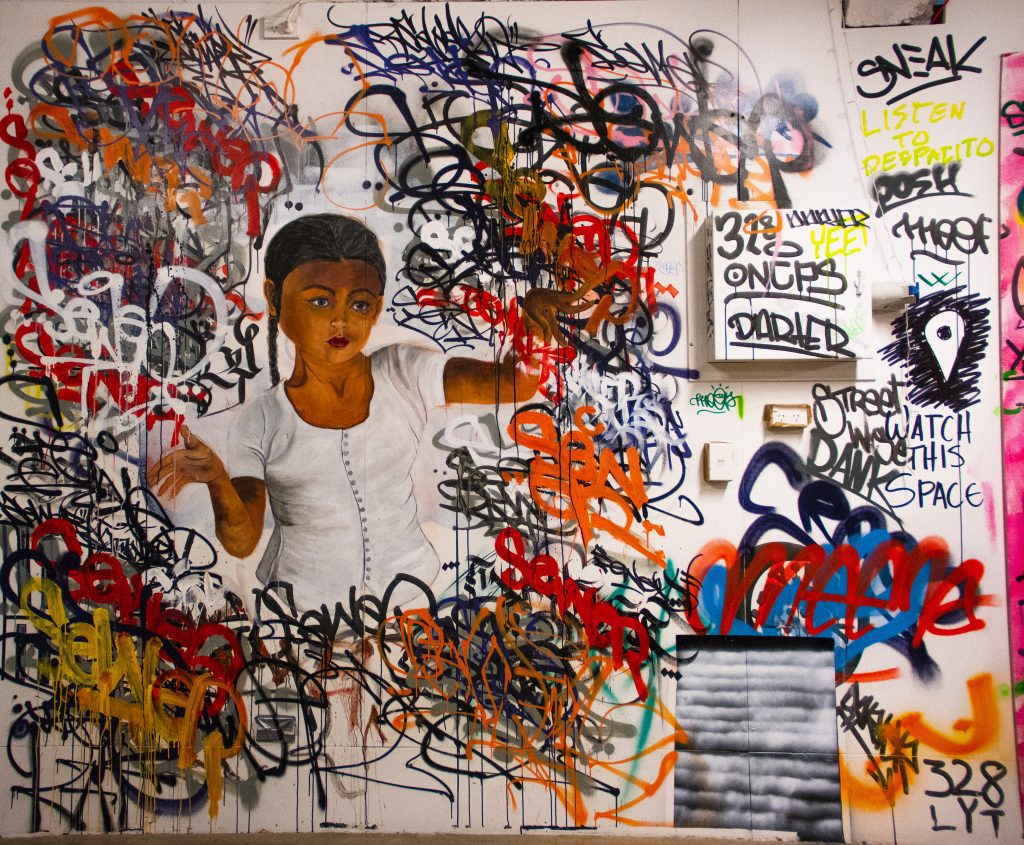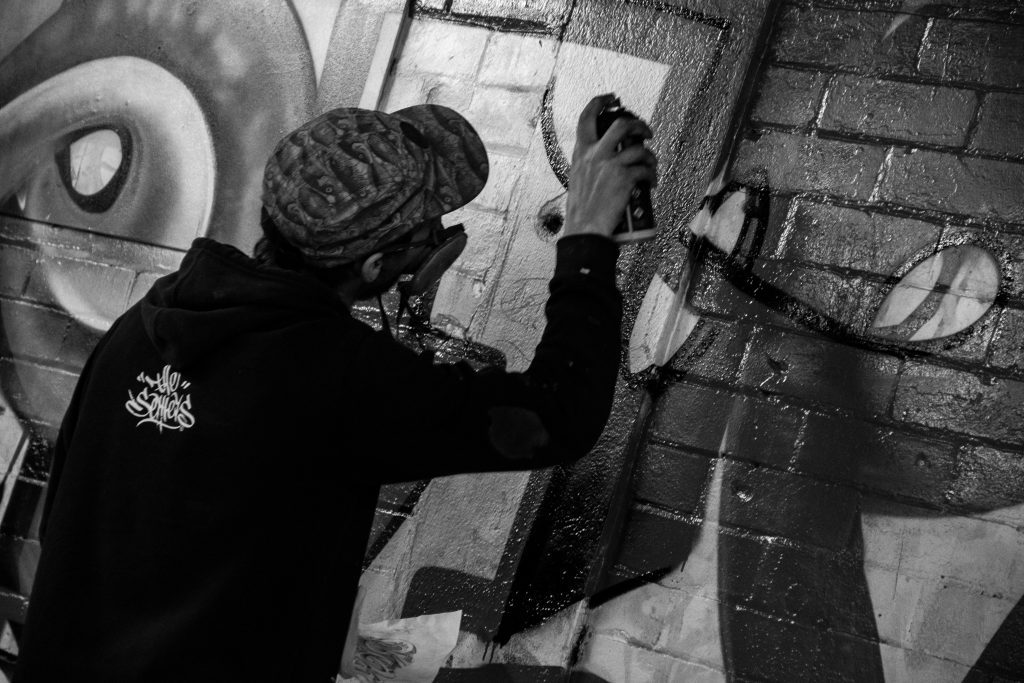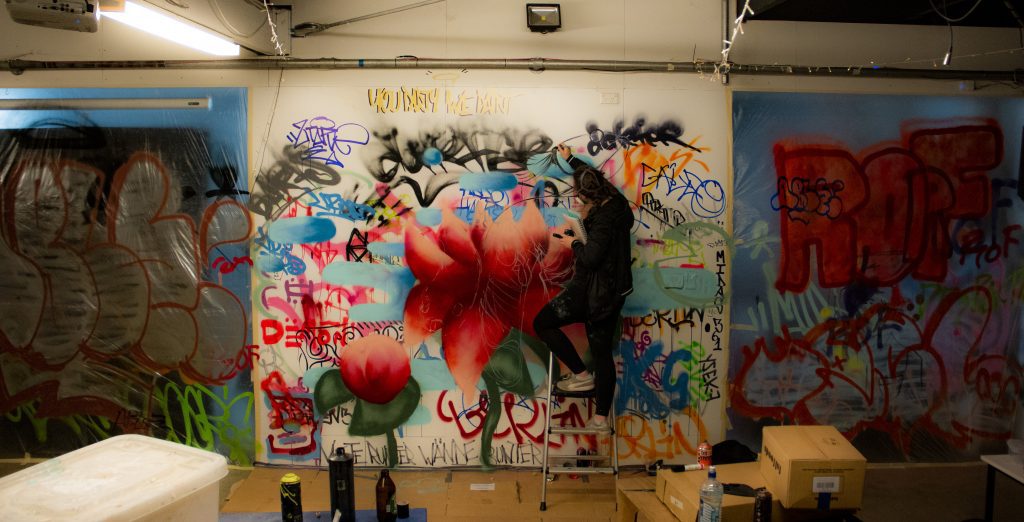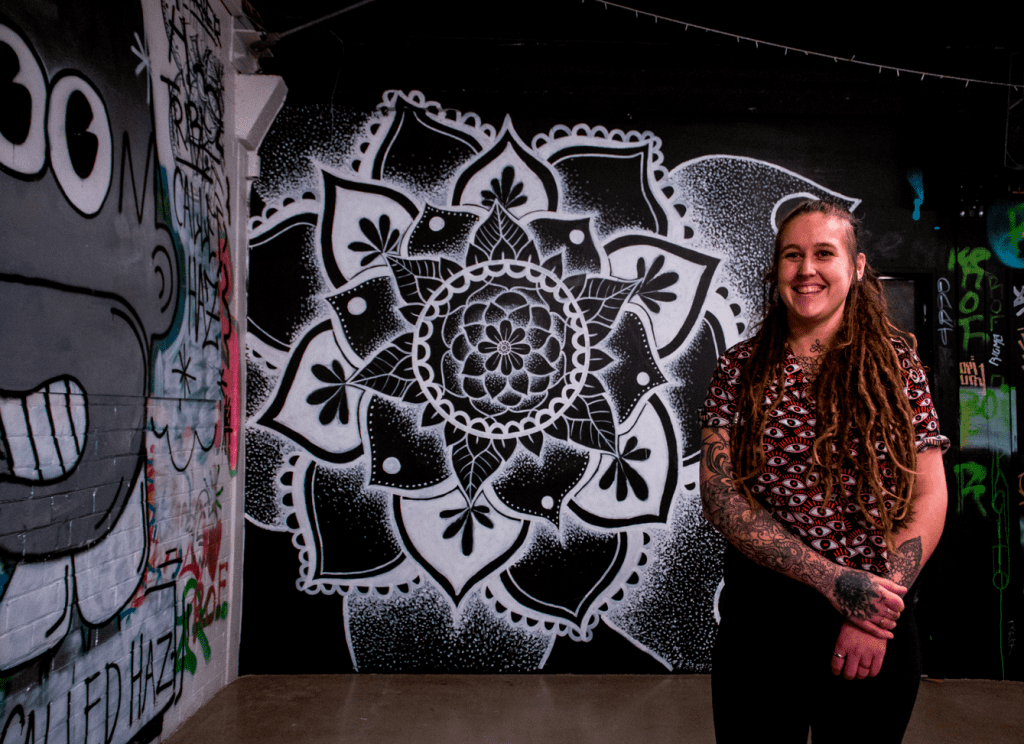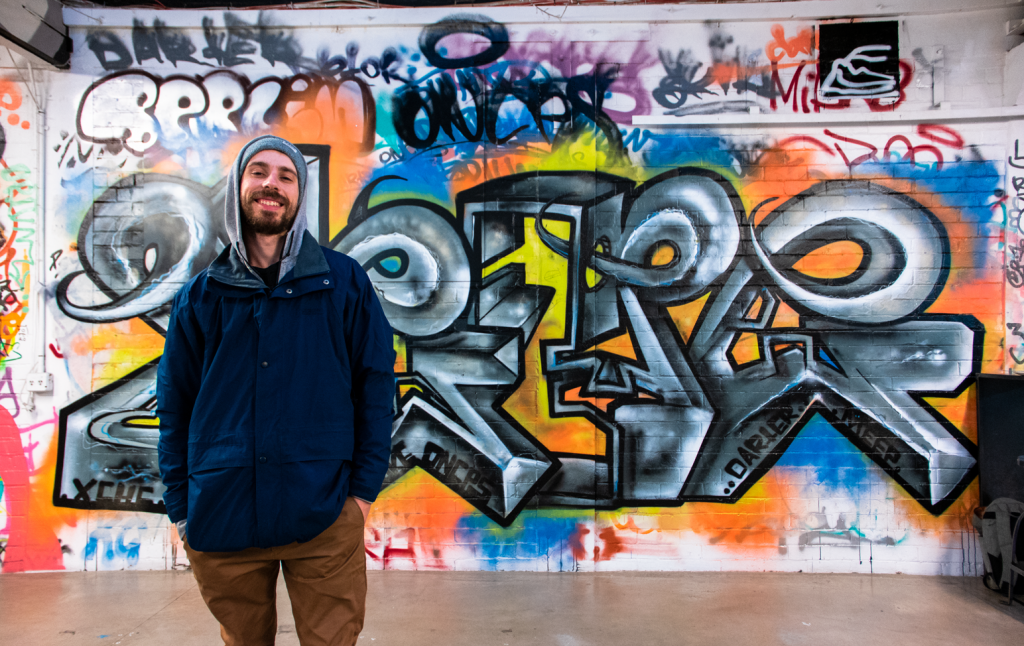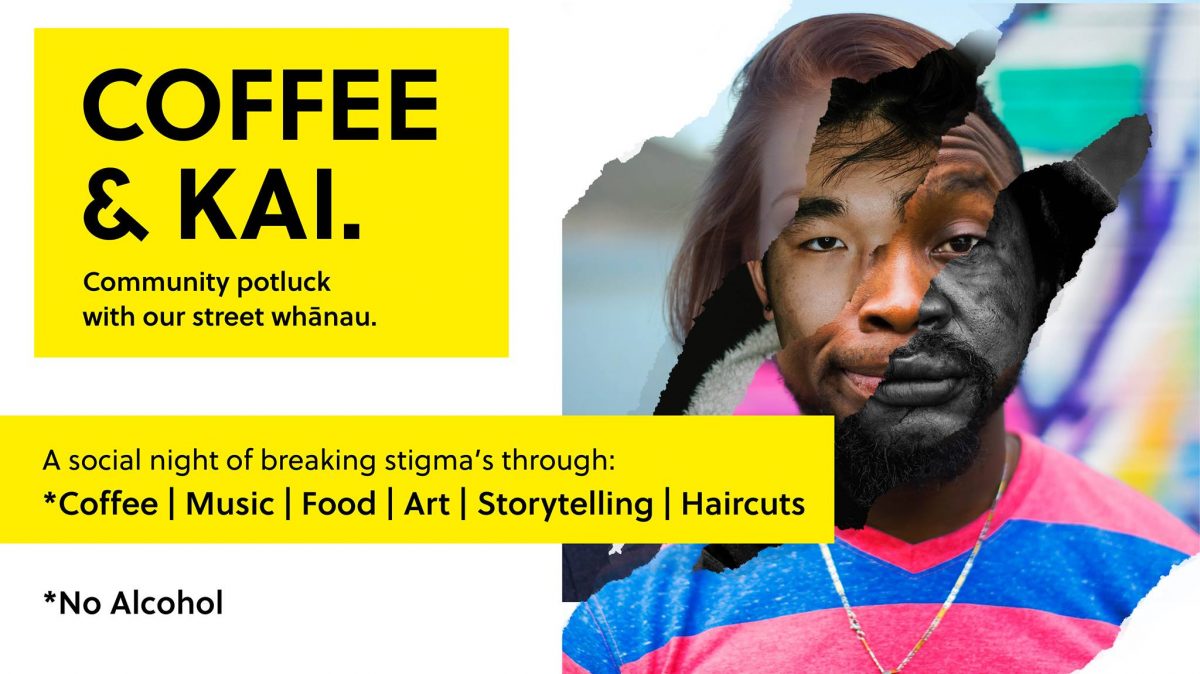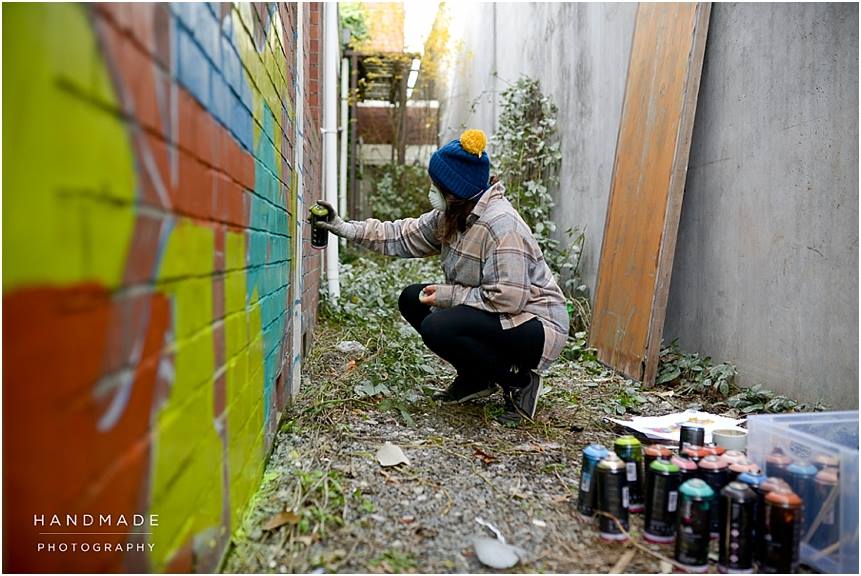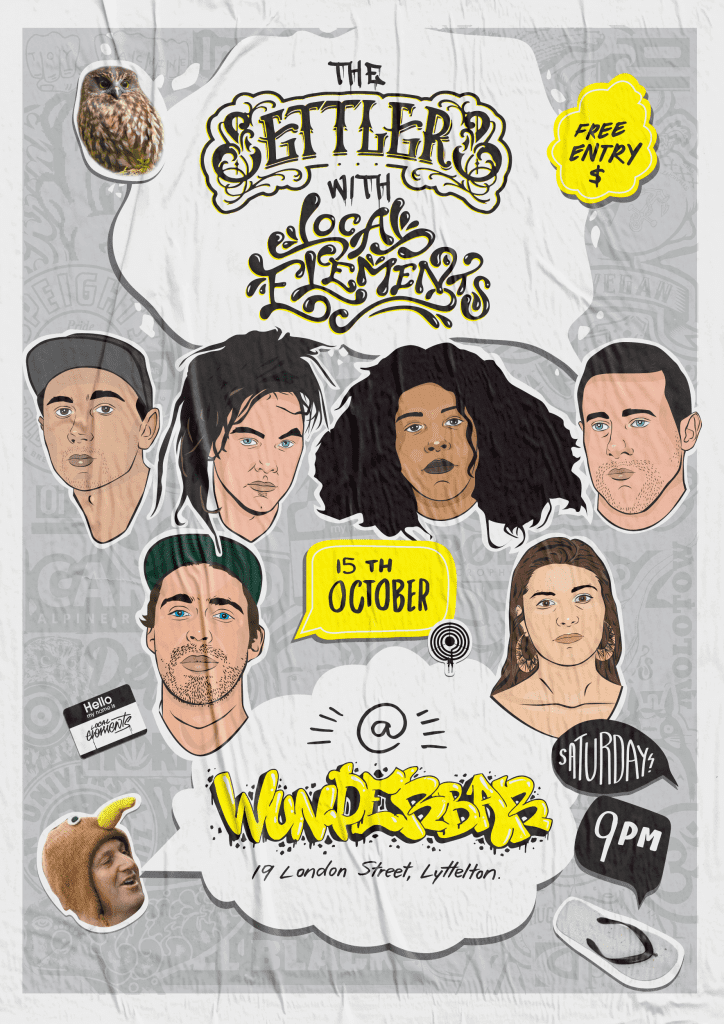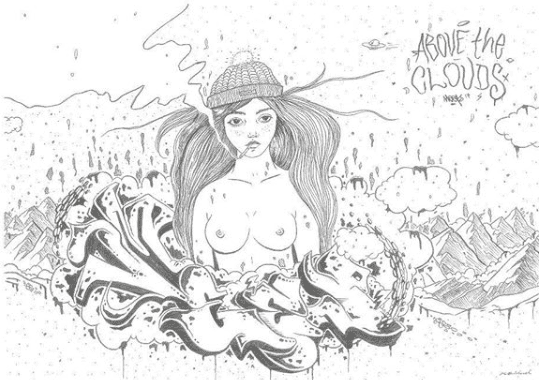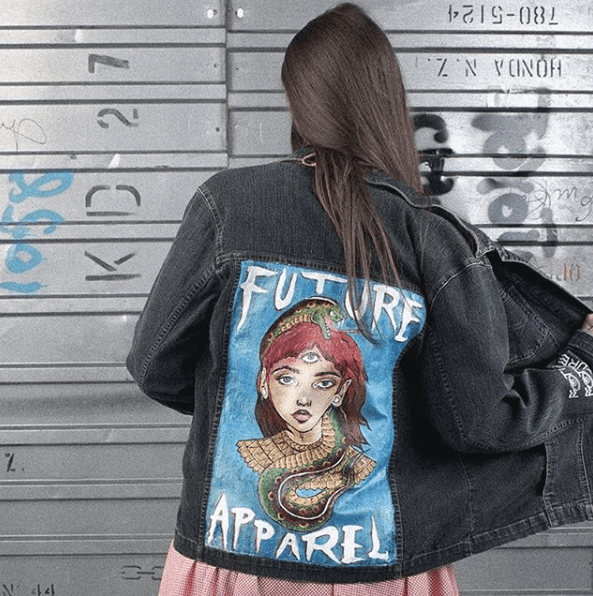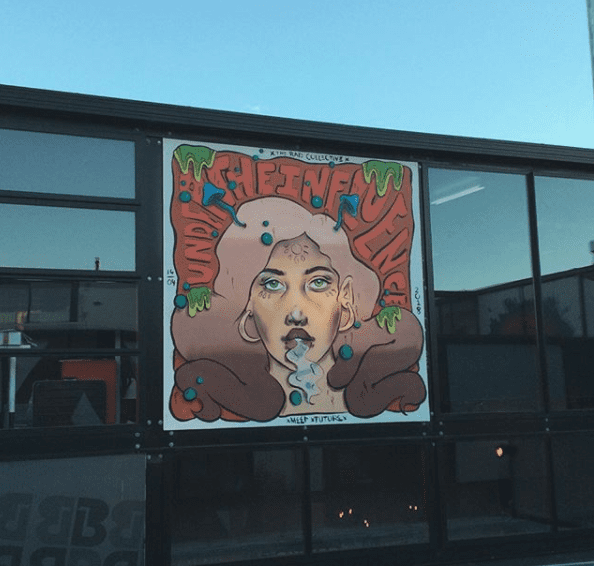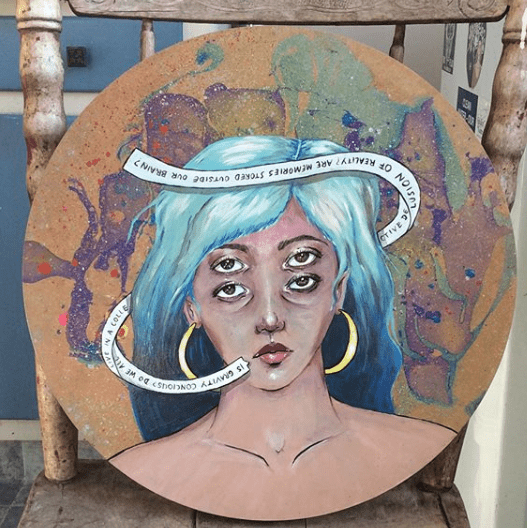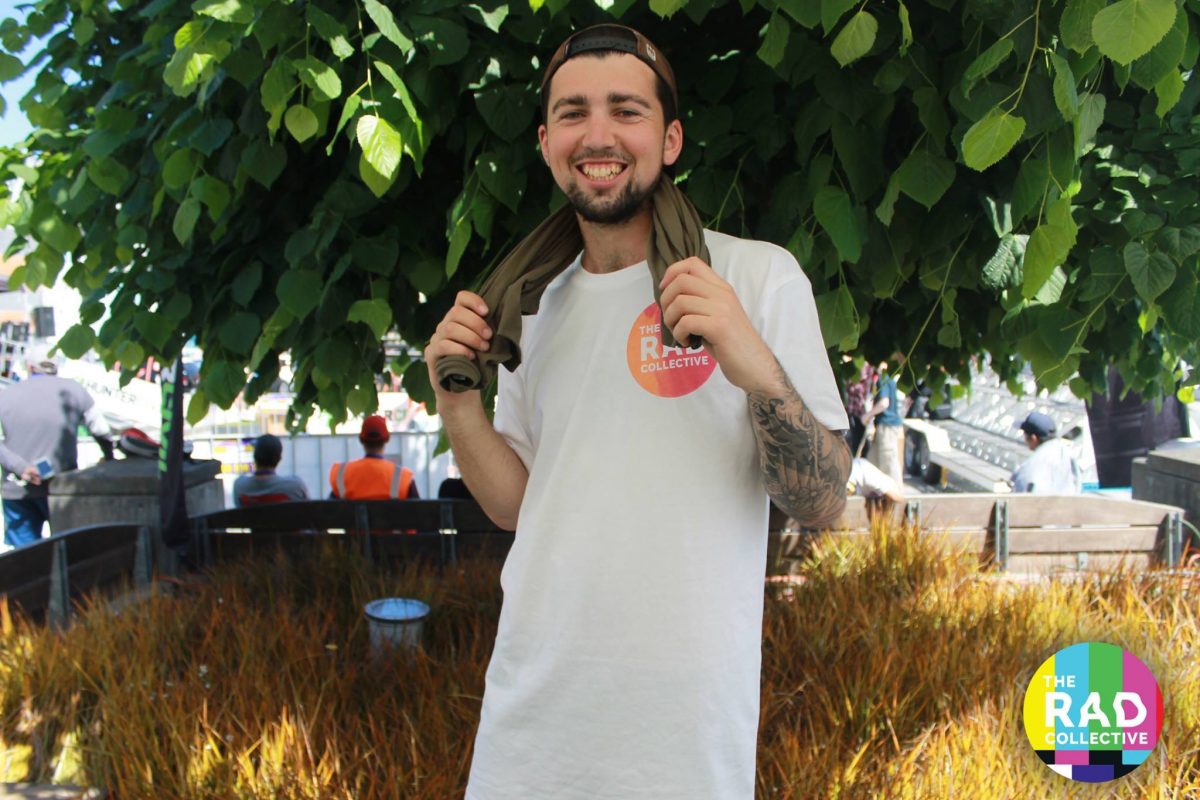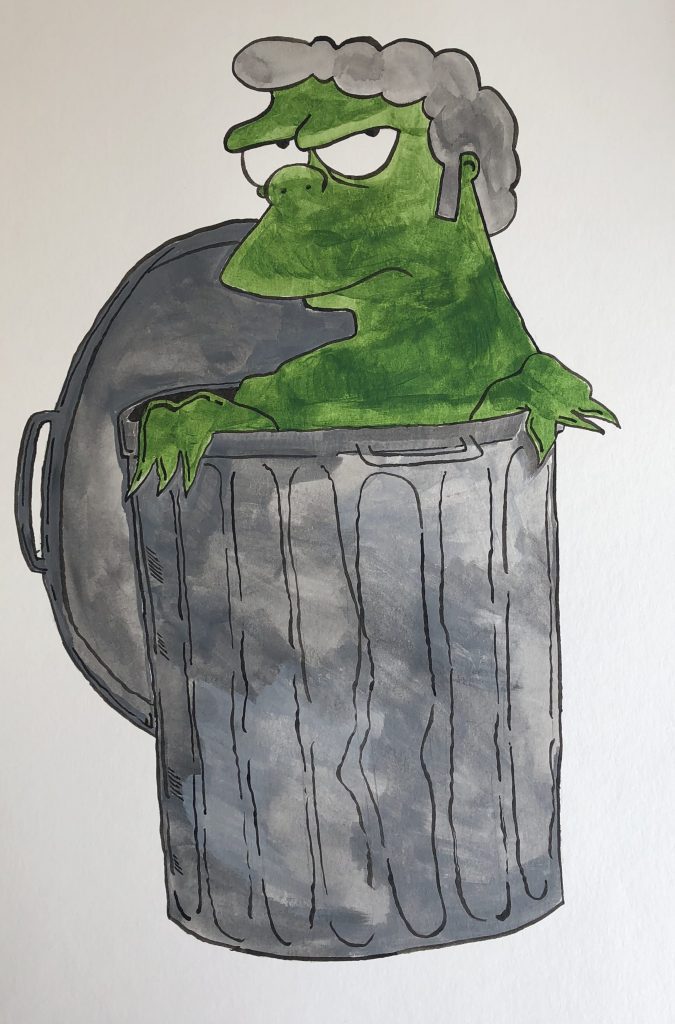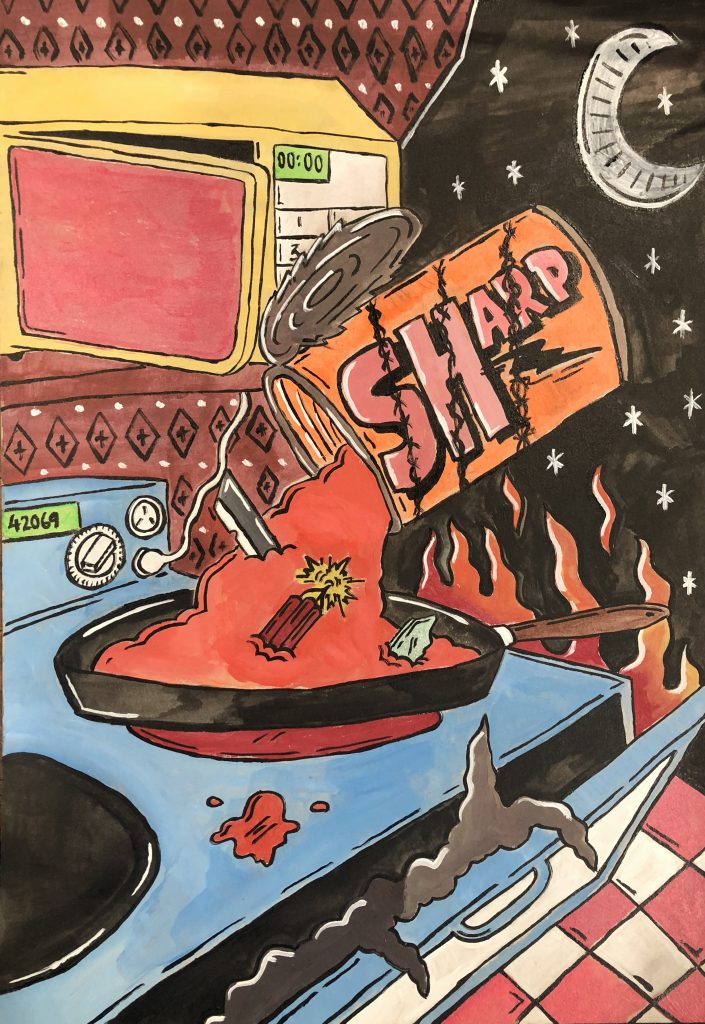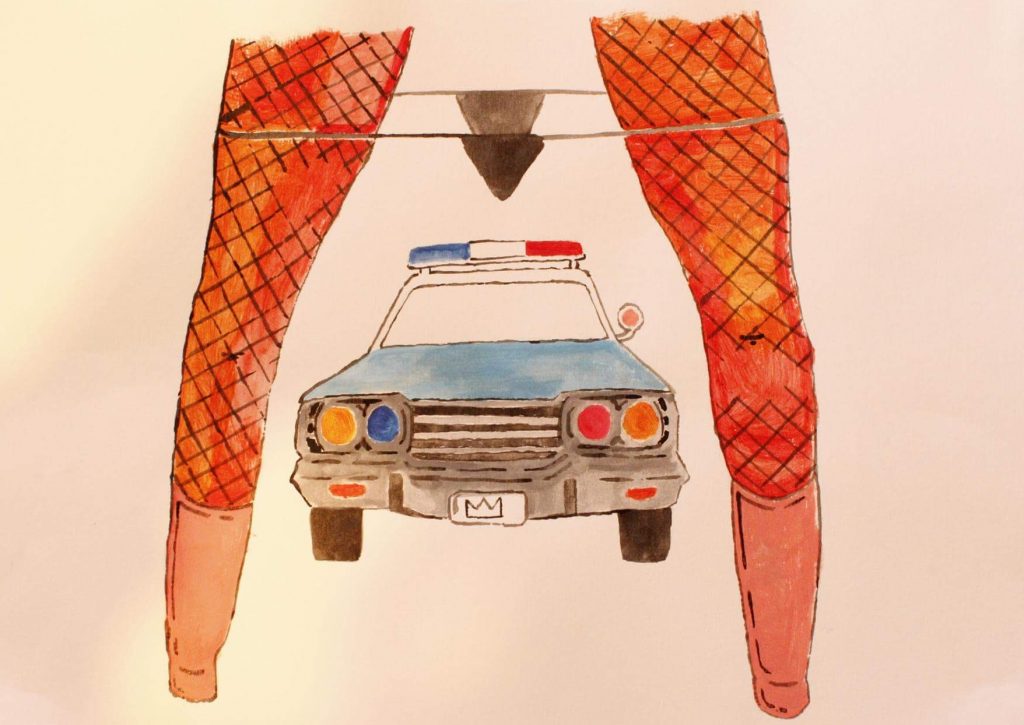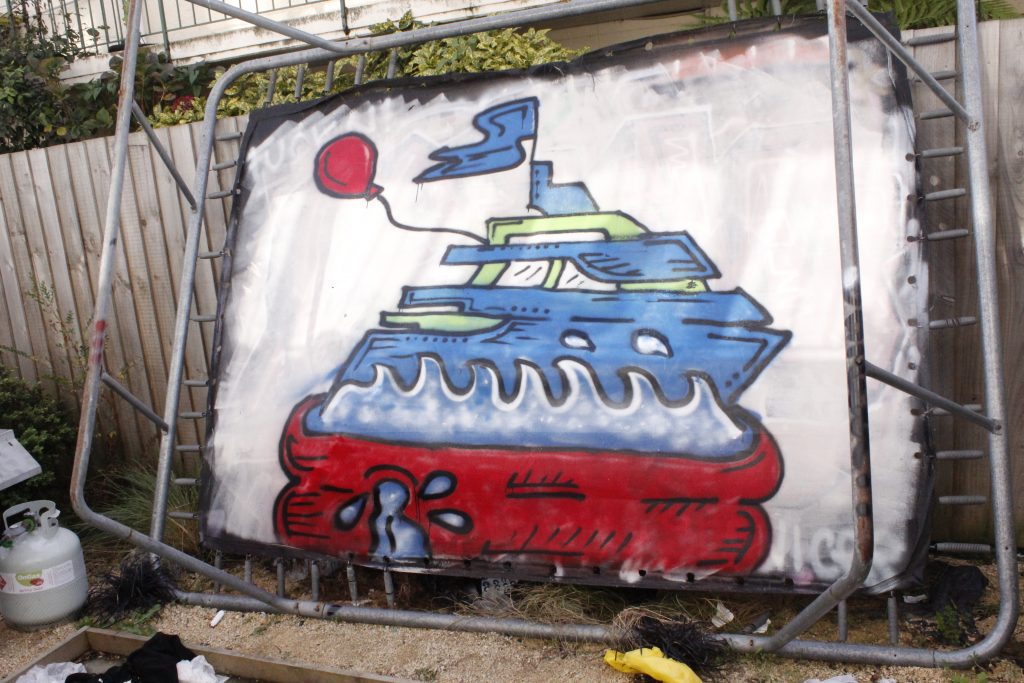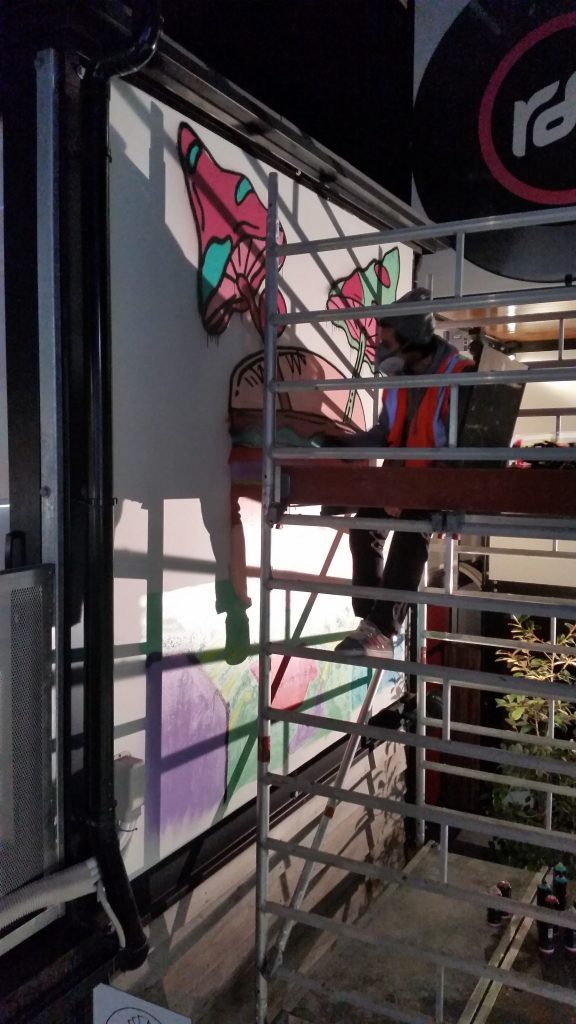Street Wise Presents: Everybody Eats – Everybody Helps
Hosted by Exchange Christchurch – XCHC
Saturday, August 4, 3pm – 9pm
Exchange Christchurch – XCHC: 376 Wilsons Road North, Waltham, Christchurch
On Saturday, Street Wise and Exchange Christchurch – XCHC are joining forces with a bunch of other good folks to host an event that brings a number of communities together, and to celebrate the things that unite us and create a space where people, including the city’s street whānau, can come together and share food, experiences and skills. As part of the Everybody Eats – Everybody Helps project, members of the RAD Collective have helped transform the XCHC space, covering the walls in graffiti and street art in a transformative gesture that brings the outside in and encourages us to ask questions about our assumptions of the streets. This is only one aspect of the wider programme, but it is an important reminder of the way urban art can serve as a transformative, subversive communicative visual culture, one that traditionally has a connection to the experience and reading of public space in ways very different to the grandeur of large scale commissioned murals that might be viewed as having been co-opted as tools of gentrification.
We caught up with Preston Hegel from the XCHC to talk about the event, what it will mean, and how urban art has a role to play…
Preston, how did Everybody Eats – Everybody Helps come together?
It was inspired by Everybody Eats in Auckland and seeing the sensibility of diverting food waste and repurposing it, seeing people wanting to contribute, chefs wanting to volunteer some time to make it happen for people who maybe weren’t seen as worth being given that time. I didn’t think that was something we could pull off here, but I still knew that there’s a similar need here, people have immediate needs. Maybe we can’t organise diverting waste from supermarkets and the strategies that go into something like that, but I knew that there were probably enough people here wanting to help so that if everybody did their little bit, we could achieve something, which is why we are doing the potluck concept. The potluck idea is something we as a community do at the XCHC once a month. We all make a dish and put down the tools and just have a meal together. We all get to know what each other is working on. We all take the time to listen, and we always end up really excited and having a good time. So, I just figured, that works for us here, so why not try to do something like that for the street whānau. I don’t know anything about the situation here, I just know that it’s bad. So, I started to look around and see who was really doing the hard yards for the street whānau, and I came across Street Wise because they were new and are higher up on the thread of activity in the city. So, immediately I just reached out and said: ‘I don’t really know much about this, but we do have a building and we have a pretty tight community and were keen to help out if there are any opportunities…’ So, I met with River from Street Wise and we found similar things inspired us and that we wanted to achieve the same thing, so we put our heads together, out came a few ideas, and we decided on a date just like that.
Headlines are so often framed in ways that ‘solve’ homelessness by moving people out of sight, by banning begging in areas, but this approach isn’t about ‘solving’ anything, it is about a positive, communal experience, and central to this is bringing people together. Often, we pass by people on the street and we may contribute something, or we may not, but I think that ability to actually come together and share an experience is really telling. So, what does the actual event entail?
I think another thing to add to the ‘sometimes we do, sometimes we don’t’ thing, is that nine times out of ten we actually want to, we just don’t know how. So, this event is about addressing how you can help in a small way, because money isn’t really the right option, but some people don’t know that. You know, you see a sign that says this is what I need, and you are kind of like, ok, but it can be confusing. So, I guess the idea is to make that process a little bit easier, not that we’re going to be walking around the streets with our baked goods every day. The XCHC is a place where people are supposed to be able to come together and have the freedom to be themselves without judgement and to have a supportive community around you. No matter what someone’s creative practice is here, you’re surrounded by people all developing their own practice, so there’s a very automatic sense of acceptance and support. You come in and the walls are down, and that is kind of a driving idea of this event as well. This event started as a way to use food to bring people together, but then we realised that it was about much more than that, it was about being able to spend time in a place where you actually feel looked after and you actually feel like you have enough time to get to know people, so it’s actually more about a social setting. So, then we thought, what pieces of a social setting do we enjoy? What might others enjoy? So, things like haircuts, I love being cleaned up, I love talking to my barber, and just the pieces of it, you know you come out looking good, and feeling even better, on the other side. But there’s also that social element, and that was automatically part of it. We knew how much My Father’s Barber has been involved with the City Mission, and the regular things they do for them, so that was something we thought we could put out there and see if it was able to come together. It’s the same with coffee. I didn’t know this, but a real thing of choice for our street whānau is coffee. They love coffee, and I had no idea, and our roaster [Mark Chirnside of Chirny Coffee] is an incredibly talented young barista and all-round coffee lover, and when we said we wanted to do something around coffee, he was just like: ‘Can I give you the beans? Can I give you support? I want to be able to give one on one attention to people who just show up.’ The haircuts, the coffee, it isn’t just for the street whānau, it is actually for anyone to come in and be a part of. It doesn’t make sense for me to arrange an entire day for this particular community I don’t intimately understand, so the idea is to open this up and then it won’t feel like it is for them, it will feel like a day of activity for everyone.
And that comes back to the idea of the communal experience, it’s not about isolation in that sense, it’s about actually engaging together as a community in a broad sense…
And we see it in a lot of ways too, we see it with Arts Access and creative organisations helping disabled communities. If you do something for the disabled, then you are really singling them out, and they want to be involved in stuff as much as anybody, and it’s exactly like you said, it’s about coming together and not being about one specific community, the XCHC is a bridge between communities, between people…
In terms of the RAD Collective, they have been working out of the XCHC for a month, what was the idea of getting them involved as part of Everybody Eats – Everybody Helps?
The RAD Collective moved in about a month ago, and I was just so blown away by their ambition and determination. There are quite a few in the group and a number of them had been exploring quitting their jobs and focusing on their creative outlets full time, which is exactly what XCHC wants to support. You know, they are going into that vulnerable stage, they need support, they need some business, to be around other creatives to stay motivated and I guess with the showcase space not being used for the couple of weeks coming up to the event we had a perfect opportunity to give them the freedom to do what they do best. This is really what the XCHC is about, you really have that support to develop and produce your work but also to showcase it and the public can come and see what you are working on and get involved themselves, so it was really a perfect invitation to come into the XCHC as a whole unit and do what they do best and contribute to something that the XCHC cares about and they were all keen. They were grateful for the opportunity, to do what they do, to do something which I think is kind of unheard of in this city, I don’t go to a lot of cafés where people are painting the walls on a regular basis. But also, to get behind this event and what it represents, and they were so willing to do it.
You have touched on the duality of this element as well. As you say, there is a chance for the RAD Collective to exhibit in a unique way. You are presenting them with the chance to be quite authentic in their presentation, because often in that transition into a full-time creative role, formative roots can be washed out somewhat, things have to look nicer, have to fit a certain expectation, so there’s a recognition of where these young creative people are coming from. But, there is also an inherent reflection of street cultures, the streets as a space for people to occupy, and to utilise as a creative expressive forum, so there is a conceptual relationship too, right?
Absolutely, the ability to bring the best of what they do into where they work and in front of an audience in a supportive space, but also for the event, to bring a community into a space who aren’t necessarily used to this sort of space, to become a home, to give a positive space, surrounded by street art, and we are in that space there with them. I don’t know if I’m going to follow through, but one of the ideas for the night was for everyone to bring to the potluck a mat or a pillow and we’re going to put all the chairs away and we’re going to be on the same level and all eat together on that same level, and appreciate the art, we’re going to have music on the night and bring all the senses together, in an experience that shows that the streets have a different look and feel to them in a positive way.
It’s not just bringing the streets inside, it is also making us think about our preconceived perceptions of urban spaces as well. We are often conditioned to think that when we are surrounded by graffiti, we are in a dangerous space, but that’s a construction, not necessarily a reality. So that’s another value, by transforming an interior space it is playing with the expectation of an exterior space, our expectation of shared environments…
I’m completely blown away at how the RAD Collective took that to another level by hosting the Coffee and Cans event on the night the exhibition was being built. They gave the opportunity to people to engage with street art and graffiti and the whole process, to grab a can and give it a try, or to meet the artists who are behind some of the work in the city. I think that’s actually the point, not to just come in and enjoy it as a finished product, but actually inviting people to come along on that whole journey and how it excites us and inspires us in that process, and I thought that was such a cool way for them to do it. I’m not an artist, so I kind of assumed that an artist doesn’t want their work to be seen until it is finished, and with my experience running the studios here, that’s usually the case, an exhibition isn’t seen until it is all ready to go, so I don’t see things through this lens, but to see them do it that way was really cool.
For sure, it is an interesting landscape now, generally speaking, with process videos and public performance elements a significant part of urban art at a number of levels, it allows a new level of consideration, both for those who haven’t had a chance to be a part of it, but also for those who are fascinated by process. So, what are the key things you want people to know, to get out there, about Everybody Eats – Everybody Helps?
I want people to know that this project and having the RAD Collective here is a perfect representation of what the XCHC is all about and to explore that over this couple of weeks. As for the event, I really want people to know that it is about more than the XCHC and it’s a very small prototype of something that is being worked on in the city. Nick Loosley, who started Everybody Eats in Auckland, talked about wanting to spread across the country, so this is about eventually honing into that model of diverting food waste, which is so important for Christchurch right now, and leveraging the talent of the chefs in Christchurch. It is not a replica of what Nick has done, it is just something that’s inspired by what he has started, but I want people to know that there is more to come on that front and I want the city to be as active in supporting it as Auckland has been, so it is about being in on it, bringing a plate, if you can’t make it, make a donation to go towards helping make future Everybody Eats events in Christchurch happen.
Get along to the XCHC on Saturday and be part of a special event. If you can’t make it on the day, you can still contribute by donating, so find out more through the Facebook event page: https://www.facebook.com/events/230716677577645/
And check out a selection of progress shots from the RAD Collective’s take over of the XCHC for the Everybody Eats – Everybody Helps event. Photos courtesy of Josh H. Jones (@harryj_jones)…




